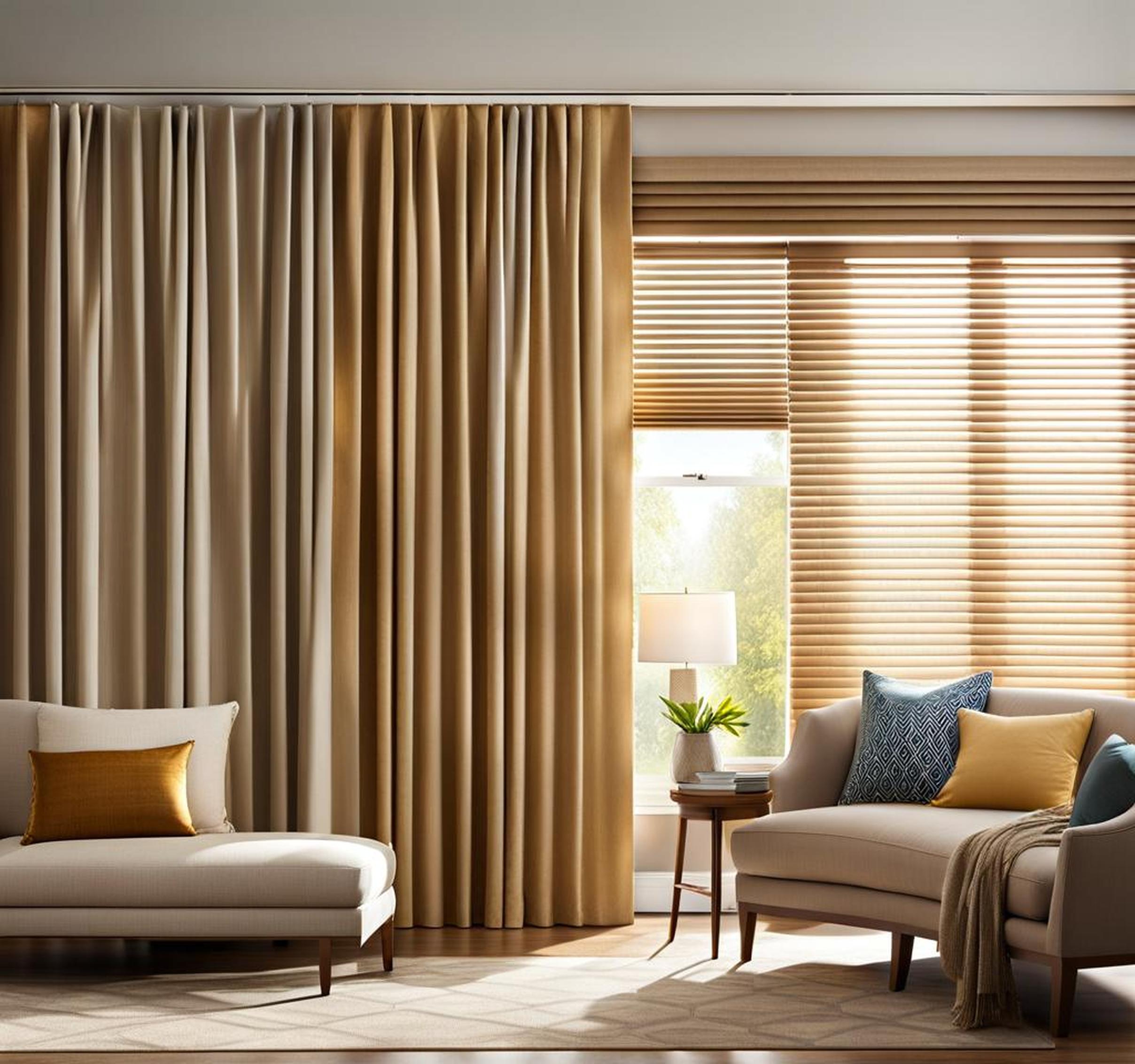If you’re looking to upgrade your windows with a polished, designer look, layering curtains over blinds can take your space to the next level. Combining these two window treatments creates visual interest while also providing privacy and light control. Follow this complete guide to get the most out of mixing curtains and blinds in any room.
We’ll walk through choosing complementary textures and patterns, proper installation, and style tips for a cohesive layered look that appears high-end.
Benefits of Layering Curtains and Blinds
Before diving into the how-to, let’s look at why layering these window treatments can be so effective.
- Adds visual interest and style – Layering allows more possibilities to dress up your windows compared to using curtains or blinds alone.
- Provides privacy and light control – Blinds filter light while curtains provide full blackout capabilities.
- Helps insulate your home – An extra layer over windows prevents heat loss in winter and heat gain in summer.
- Allows you to mix patterns and textures – Play with different fabrics and prints to make a statement.
- Gives a polished, upscale look for less – Designer layering at a fraction of the price.
What to Consider Before Hanging Curtains Over Blinds
Achieving the perfect layered look involves some forethought. Keep these factors in mind before hanging your curtains:
Weight of Curtains
Heavy curtains can strain blinds, causing damage over time. Opt for sturdy blinds that can support the weight of thicker drapes without warping.

Type of Blinds
Some blinds, like vinyl or aluminum Venetian blinds, are too flimsy for layering. Consult an expert if unsure whether your existing blinds can handle curtains.
Color and Pattern Coordination
Choose curtains in a similar or complementary color and pattern to your blinds. This prevents clashing and creates harmony.
Texture Layering
Interesting textures like sheers and linen work beautifully together. Fool the eye by pairing lighter and heavier fabrics.
Light Control
Use blackout curtains over blinds already doing some light filtering to gain total control over incoming light.
Hanging Curtains Over Blinds
Proper installation is key to achieving a layered look that appears professionally designed.
Position of Curtain Rod
Mount your curtain rod as close to the ceiling as possible. This fully exposes the window and layers the treatments.
For no- drill options, use tension rods or blind/curtain brackets designed for layering.
Adjusting Curtain Length
Floor-length curtains make a dramatic statement, while barely clearing the window frame gives just a preview of your blinds. Choose based on the look you want.
Avoid Clashing Patterns
Stick to solid curtains or subtle patterns so as not to compete with bold blind prints. Keeping one layer neutral creates balance.
Mixing and Matching Curtains and Blinds
When it comes to color, pattern, and texture, plenty of combinations work well. Here are a few foolproof ways to pair them up.
Repeating Colors
Pull an accent color from your curtains to match the blinds exactly. This monochromatic scheme is always in style.
Combining Textures
Sheer curtains soften the harsh lines of blackout roller shades. The transparency and texture contrast create dimension.
Minimizing Pattern Clash
Limit patterns to just curtains or just blinds. If you must mix prints, ensure scale contrast – small floral curtains over large striped blinds, for example.
Layering curtains over blinds takes some finesse, but the payoff is worth it. Follow our techniques to effortlessly elevate your windows. With the right furnishings, you can achieve an elegant designer look on any budget.
Remember to consider weight loads, install curtains high and wide, and look for complementary colors and patterns. Mastering the art of layering curtains and blinds creates a pulled-together space bursting with style and function.
